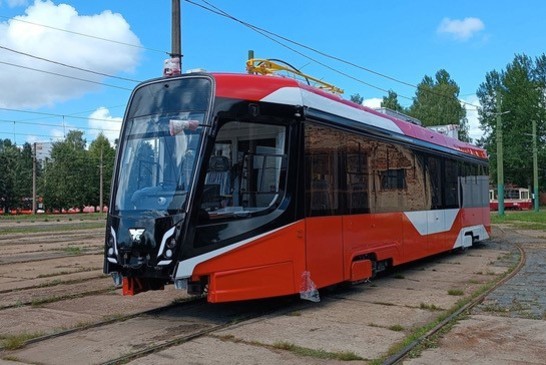Sankt Peterburg receives new tram designs
Posted on 4th September 2023 at 13:29
Russia’s second city, usually referred to incorrectly as Saint Petersburg, the home city of President V. V. Putin and with a population of 5.6M, has one of the world’s largest tramway systems with 40 lines operating over a 231km (144-mile), 1524mm-gauge, system with a fleet of around 2000 cars. Horse trams were introduced in 1862 and electric trams in 1907. In addition to the main network operated by the city-owned Gorelektrotrans, two lines in the eastern suburbs are operated by the private company TKK.
A network like this needs to constantly update its fleet and in this respect Gorelektrotrans fell behind, but significant efforts are now being made to catch up, thanks in part to environmental grants available from the Russian government. The city has its own tram factory, once destined for a failed project to bring Alstom trams to the network, but now owned by PK Transportnye Systemy.
Currently being delivered from this plant are low-floor cars of types 71-923 Bogatyr (two-section) and 71-931 Vityaz-M (three-section). But in order to speed up the replacement rate of older high-floor trams, the city has placed orders with other Russian tram factories. Arriving within a few days of each other on 23 August and 1 September were the first of 14 71-628 bogie trams from UKVZ of Ust-Katav (for lines with lighter loadings) and the first of 42 71-431 Dostoevsky retro-design three-section low-floor trams for city centre lines.

71-628 100% low-floor bogie tram from UKVZ. (Gorelektrotrans)
Share this post:

